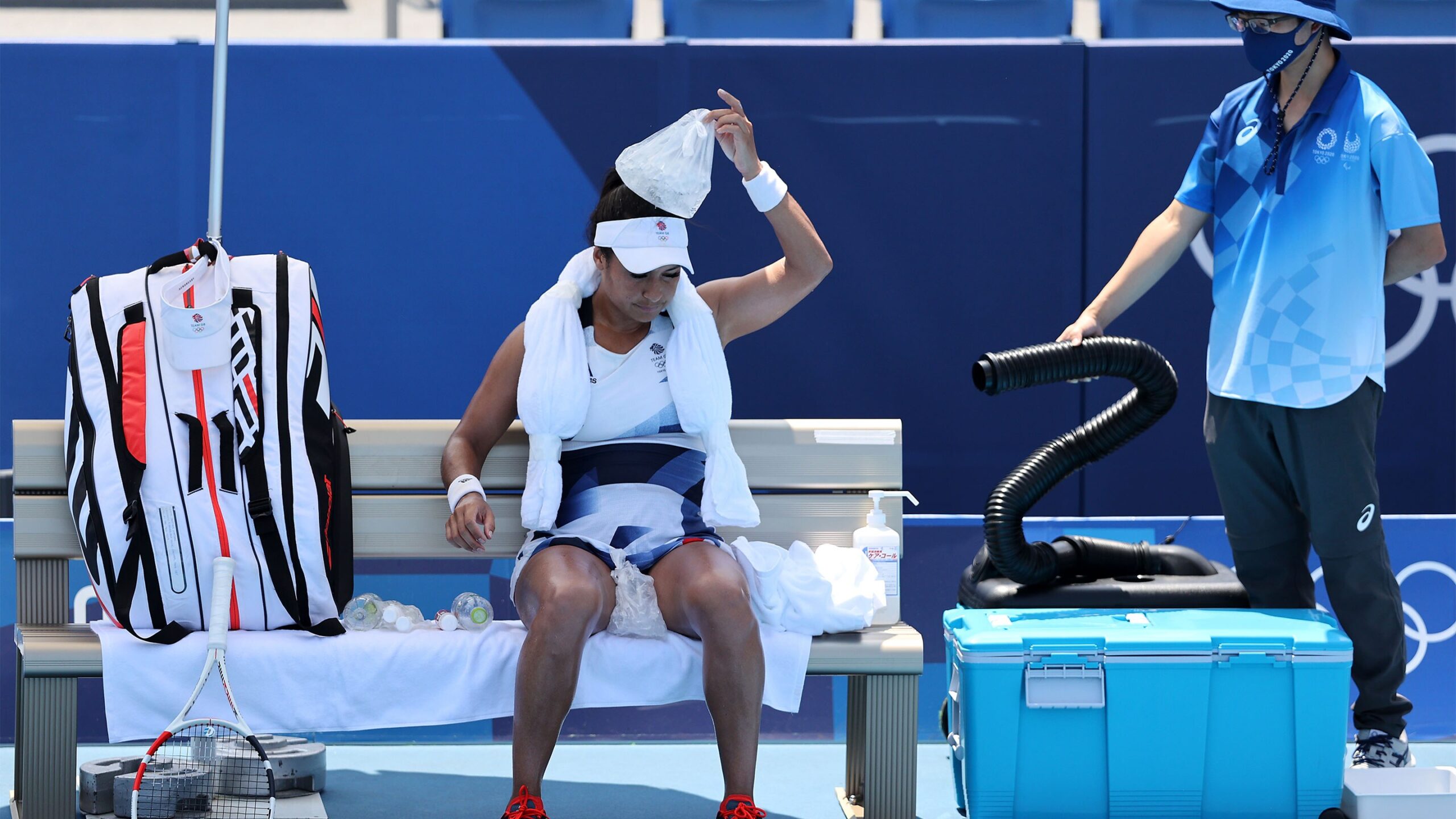A group of medical experts have developed a suite of tools for the Olympic Games Tokyo 2020, to counteract the effects of high temperatures and keep the competitions safe for athletes.
Dr Sebastien Racinais, a heat expert in the International Olympic Committee (IOC)’s Medical and Scientific Commission Games Group, explains how Tokyo 2020 is treading new ground when it comes to stopping heat from impacting athlete performance and health.
Q. What preparations were made to mitigate the heat at Tokyo 2020?
In 2018 we created the Adverse Weather Impact Expert Working Group for the Olympic Games Tokyo 2020, to work on this issue with the IOC, the Tokyo 2020 Organising Committee and a range of international experts with a clinical or academic background. One of our first actions was to look at the environmental conditions. Since 2017, Tokyo 2020 has recorded the environmental conditions in every venue during the period of the Games. So, looking at that, we made some amendments to the programme. For example, rugby was moved earlier in the day to avoid the period of heat stress, and mountain bike was delayed in the afternoon.
Q. What heat countermeasures are being deployed in Tokyo to protect athletes and other people?
One of the early actions was to work on educational material for the athletes, International Federations and coaches on how to prepare for the heat, explaining the temperature and the science behind it with practical examples. That is something we started to communicate in 2018. We know that, for outdoor sports in the heat, the outcome will be totally different if the athlete is prepared or not. So the most important countermeasure is actually in the hands of the athlete. That is why we have been totally open.
Another larger scale action was to work on the medical countermeasures. For that we have been establishing two things. At 11 venues with sports that we consider as being at a high risk of Exertional Heat Stroke (EHS), plus at the polyclinic in the Olympic Village, there is a dedicated medical facility called a Heat Deck, where we can handle heat-related events with immediate cooling on site and diagnostic facilities looking at core temperature, blood sodium and so on.
In addition, we also designed an algorithm of treatment – the Algorithm for Pre-hospital Management of Exertional Heat Stroke at Sports Competitions. This is one of the legacies of these Games, because we expect this to become the standard algorithm for any high-level sporting event around the world.
At all the venues with a Heat Deck, all the medical personnel, including local doctors, received dedicated training on the diagnosis and treatment of EHS. After that, there was a series of smaller countermeasures that have been worked on, including providing shade in some warm-up areas and mixed zones. We also make sure that every single venue has hydration, and big truck of ice.
Q. Have there been any unexpected challenges in terms of heat?
What was unexpected was Covid. Now when people look at temperature, they think Covid first. But when an athlete is exercising, we want them to think heat exhaustion first.
If you have somebody walking into your clinic who has a temperature of 39 degrees, you think Covid, and they go into isolation. But if you have an athlete exercising with a temperature of 39, you don’t send them to isolation. One thing we have had to do is specific education, to make sure the doctor uses temperature in the context of when and who has been measured.
Some athletes were not able to go for training camps in hot countries because they could not travel. Some could not train in the heat chamber in their national sports institute because it was closed due to Covid. The preparation of the athletes has been impacted because of Covid, and due to that, indirectly, their ability to exercise in the heat might have been impacted.
Q. How many athletes at Tokyo 2020 have received treatment for heat stroke?
We have had no cases of heat stroke in Tokyo. There is some minor heat illness, but not proper heat stroke, which is the most severe form of heat illness. We are ready for it, but hopefully there will not be any cases.
Q. What is Exertional Heat Stroke?
EHS is an emergency condition that is defined by exercise-induced hyperthermia, generally with a core body temperature of over 40.5C, associated with central nervous system dysfunction such as disorientation, confusion, aggressiveness, hysteria, delirium, altered consciousness and irrational behaviour.
EHS can affect the fittest athletes when their physiological capacity to dissipate metabolic heat production, related to exercise intensity, is challenged by environmental stress, such as high temperature, high humidity, solar radiation and lack of wind flow, and/or intrinsic factors such as dehydration, excess motivation and recent illness.
EHS should not be confused with heat exhaustion, which is defined as an inability to effectively continue exercise due to cardiovascular insufficiency, hypotension, energy depletion and central fatigue. While the incidence of heat exhaustion is greater than EHS, the condition can be managed by rest, body cooling and rehydration, and the prognosis is benign.
Heat stroke itself is very well defined and it hasn’t happened yet at Tokyo 2020. It may or it may not. But if it does happen, we know how to treat it.


